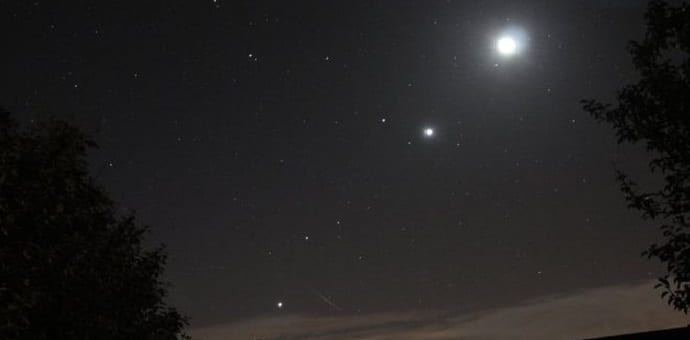Table Of Contents
Catch the awesome cosmic spectacle from Jan 20 to Feb 20 when five planets get together
Mercury, Venus, Mars, Jupiter and Saturn align simultaneously in a spectacular cosmic show in the morning sky for the first time in a decade
Stargazers all over the world are going to be dazzled over the coming weeks, as five planets are going to be visible in the morning sky in a rare astronomical alignment.
For the first time, Mercury, Venus, Mars, Jupiter and Saturn are going to appear together in over a decade. They were last seen aligned together was in between mid-December 2004 and mid-January 2005.
“Not many people have seen all five naked [eye] planets and at the same time,” said Randy Attwood, executive director of the Royal Astronomical Society of Canada. “Usually, they’re visible at different times of the night.”
And most of the time, he added, some of them are not visible. That happens when they are on the opposite side of the sun relative to Earth.
The alignment was first visible in Britain just before dawn on January 20, Wednesday but astronomers say the best view is likely to be on the morning of February 5. The alignment continues until February 20.
The planets form a diagonal line from the Moon to the horizon and with clear skies and good eyesight, should be visible with the naked eye.
Spotting Mercury would be a challenge, as there will be a narrow window in which it can be caught in line with the others. Mercury will be very low in the southeast, which is the same direction as the rising sun. However, the other planets should be easy to see before dawn.
“There will be a dance of the planets, and now is the time to get out and have a look,” said Dr Robert Massey of the Royal Astronomical Society.
“It will be well worth getting up for.
“People will struggle to see Mercury, it will probably just look like a star but if we get good weather we should be able to see Venus, Saturn, Mars and Jupiter well. But people should have a shot at seeing them altogether.
“Venus will be very obvious in the south east and Saturn will be a little bit higher up to the right. Further over at due south, you’ll see Mars and way beyond in the south east will be Jupiter.
“They won’t be in an exact straight line, because you virtually never get that in astronomy. They will be more scattered.”
Mercury will appear just three degrees above the horizon – the equivalent of three thumb widths with an outstretched arm – so will be the trickiest planet to spot.
The best time to see the alignment of planets will be an hour to an hour and a half before sunrise. Earlier than that, some of the planets will not be above the horizon and any later, the light from the sun will drown out the glimmer of the planets as daylight approaches.
It is best to try and see Venus, as it is the brightest, before looking for the rest of the planets. This bright planet can serve as a guide to finding Mercury, the dimmest of the five planets, and Saturn, the second dimmest.
While Mercury, Venus and Saturn are clustered over the south-eastern horizon, Mars and Jupiter will be visible higher up in the sky to the south and southwest.
Those searching for Jupiter among the backdrop of countless stars should look to the southwest and search for the brightest object, as Jupiter is the second brightest planet after Venus.
While Mars may not be as bright as Jupiter, it does give off a faint red glow, helping to set it apart from the white speckles of far-away stars over the southern horizon.
Four of the five have already been visible in the early morning sky in recent weeks, but Mercury joined them for the first time on Wednesday.
Dr Massey added: “If you have binoculars you will be able to see Jupiter’s moons and the red tinge of Mars. You probably won’t be able to see Saturn’s rings but it will have a funny shape because of the rings which you should be able to pick out.
“If you are using binoculars it’s important not to look towards the sun when it rises.”
“They won’t be in an exact straight line, because you virtually never get that in astronomy,” says Dr Massey. “They will be more scattered.”
The stars Antares and Spica will also be visible in the same patch of sky. Uranus and Neptune are the only two planets that will not be on show.
People hoping to catch a glimpse of the alignment should choose an open spot, away from tall buildings and city lights to avoid light pollution.
If you miss this alignment, it will be possible to view Mercury, Venus, Mars, Jupiter and Saturn in the evening sky later this year from about August 13 to August 19, according to EarthSky. After this, your next chance to so easily see a grand parade of these five planets will only be in October 2018.
